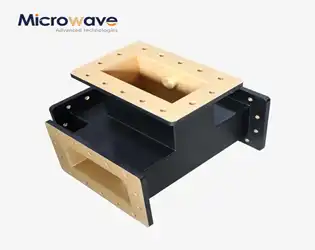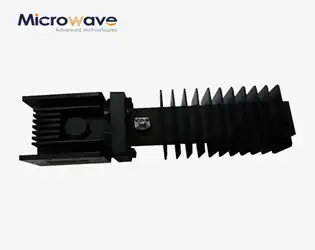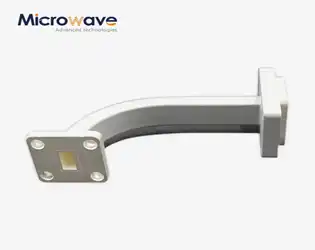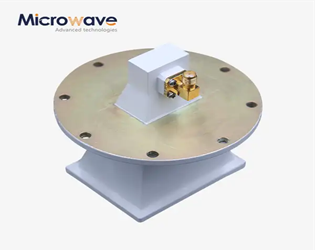BLOG

October 28, 2025
In today's advanced microwave systems, engineers face a critical challenge: how to integrate nonreciprocal magnetic components like isolators and phase shifters into compact planar circuits without compromising performance. Traditional transmission lines often require bulky three-dimensional configurations that complicate manufacturing and limit miniaturization. The coplanar waveguide (cpw waveguide) emerges as an elegant solution to this problem, offering a planar geometry where all conductors reside on the same substrate surface, enabling seamless integration of gyromagnetic devices while maintaining excellent electrical characteristics. This breakthrough transmission line technology has revolutionized the design of modern microwave integrated circuits, particularly in applications requiring precise magnetic field polarization and compact form factors.
What is an H-Plane Waveguide Tee?
October 27, 2025
Are you struggling with signal distribution challenges in your microwave system, experiencing power losses that compromise performance in critical satellite communications or radar applications? Understanding H-Plane Tee technology is essential for engineers who demand precise signal routing and minimal insertion loss in high-frequency applications. An H-Plane Tee is a three-port waveguide junction where the auxiliary arm connects to the narrow wall of the main waveguide, creating a shunt connection that enables efficient power division or combination while maintaining excellent phase characteristics and signal integrity across wide frequency ranges.
High Power Waveguide Isolators - Reliable RF Solutions
October 27, 2025
Picture this: You've invested hundreds of thousands in sensitive radar equipment, only to watch it fail catastrophically from reflected power surges. Your satellite ground station loses critical signal integrity during peak transmission hours. Your defense system's reliability is compromised by unexpected signal reflections. These nightmares are all too real in high-power RF applications, but they don't have to be. High Power Waveguide Isolator technology provides the protective barrier your mission-critical systems desperately need, ensuring reflected power never reaches your valuable transmitter components while maintaining exceptional signal quality across demanding operational environments.
What is the difference between E and H Waveguide Bends?
October 27, 2025
When designing high-frequency microwave systems for satellite communications or defense radar applications, engineers frequently encounter a critical challenge: how do you redirect electromagnetic signals through 90-degree turns without compromising signal integrity? A single misaligned waveguide bend can introduce unwanted reflections, degrade system performance, and cause costly mission failures in critical applications. Understanding the fundamental differences between Waveguide E Bend and H Bend configurations is essential for anyone working with microwave transmission systems, as these components directly impact signal quality, system efficiency, and overall operational reliability in demanding aerospace and telecommunications environments.
Four Proven Benefits of the Pyramidal Linear Polarization Horn Antenna for Telecom Infrastructure
October 24, 2025
Telecom operators face mounting pressure to deliver seamless connectivity across expanding networks while managing costs and maintaining signal integrity in challenging environments. Network downtime, signal degradation, and incompatibility issues between legacy and modern systems create operational nightmares that directly impact service quality and customer satisfaction. The Pyramidal Linear Polarization Horn Antenna emerges as a strategic solution to these pain points, offering proven advantages that transform telecom infrastructure performance. This article explores four critical benefits that make this antenna technology indispensable for modern telecommunications networks, from base station optimization to long-distance signal propagation.
Waveguide Anti-leak Gasket, Used between waveguide flanges to prevent transmission signal leakage
October 24, 2025
Have you ever experienced critical signal degradation in your high-frequency microwave systems due to electromagnetic leakage at flange connections? This common yet devastating problem can compromise entire communication networks, radar systems, and aerospace applications. The Waveguide Anti-leak Gasket serves as the essential barrier between waveguide flanges, preventing transmission signal leakage that leads to system inefficiency, interference, and potential mission failure. In an era where signal integrity determines operational success, understanding how these specialized components protect your microwave infrastructure becomes not just important—it becomes mission-critical.
Custom Waveguide Assemblies for Precision Applications
October 24, 2025
In high-frequency microwave systems, signal integrity during directional changes remains one of the most critical challenges engineers face daily. When satellite communication links fail, radar systems produce inaccurate readings, or telecommunications networks experience signal degradation, the culprit often lies in inadequate waveguide routing solutions. Custom waveguide assemblies, particularly those featuring Double Ridge Waveguide Bend technology, address these pain points by maintaining optimal signal transmission even through complex routing configurations, ensuring your mission-critical systems operate without compromise.
How to Design Coplanar Waveguide with Ground in Your PCB?
October 23, 2025
Imagine spending months perfecting your high-frequency PCB design, only to face crippling signal degradation and EMI interference during testing. This nightmare scenario haunts RF engineers daily, especially when routing critical microwave signals. The solution lies in mastering coplanar waveguide (cpw waveguide) design with ground planes—a transmission line structure that delivers superior isolation, controlled impedance, and minimal signal loss for frequencies ranging from sub-GHz to millimeter-wave applications. This comprehensive guide reveals professional techniques for implementing grounded cpw waveguide structures that ensure your RF circuits perform flawlessly in satellite communications, 5G systems, radar applications, and beyond.




